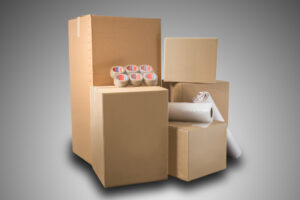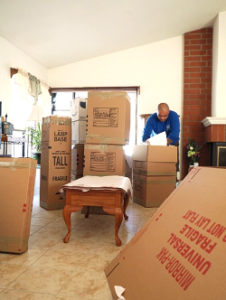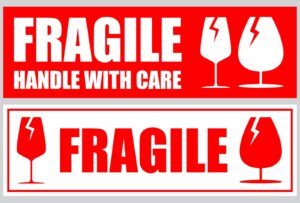
Moving Fragile Items – Best Practices
Moving fragile items requires careful planning and execution to prevent damage. Whether you’re relocating or shipping delicate possessions, employing best practices is essential. This ABC Moving Systems guide outlines key strategies to ensure the safe transport of fragile items.
Packing Materials
 Moving fragile items demands meticulous attention, starting with the choice of packing materials. Opt for sturdy boxes designed for delicate items.
Moving fragile items demands meticulous attention, starting with the choice of packing materials. Opt for sturdy boxes designed for delicate items.
Bubble wrap provides an excellent protective layer, preventing shocks and minimizing the risk of breakage. Use packing peanuts to fill empty spaces within boxes, ensuring a snug fit for items.
When wrapping individual items, utilize soft materials like packing paper or foam to provide an extra layer of defense. Consider reinforced tape to secure boxes firmly, minimizing the chances of accidental openings during transit.
Remember to label boxes with fragile contents clearly, alerting movers to handle them with care. Adequate cushioning is paramount, especially for delicate or oddly shaped items that might be susceptible to damage.
Incorporate a systematic approach, placing heavier items at the bottom and lighter ones on top, preventing crushing. When employing best practices with packing materials, you create a robust foundation for the safe transport of fragile items, significantly reducing the risk of damage throughout the moving process.
Proper Box Selection
When it comes to moving fragile items, choosing the right boxes is crucial for ensuring their safety and protection. Here are essential tips for proper box selection:
- Box Durability: Opt for sturdy, double-walled boxes that can withstand the weight and provide an added layer of protection.

- Size Matters: Use boxes of appropriate sizes to avoid overloading and ensure a snug fit for your fragile items.
- Specialized Boxes: Consider using specialized boxes designed for specific fragile items, such as dish boxes for kitchenware.
- Dividers and Inserts: Utilize dividers or inserts for items like glassware, preventing them from clashing and causing breakage.
- Avoid Overcrowding: Resist the temptation to overcrowd boxes; leave enough space for adequate cushioning materials.
- Reinforce Bottoms: Strengthen box bottoms with extra tape to prevent sagging, especially for heavier fragile items.
- Uniformity in Boxes: Aim for uniformity in box sizes to facilitate easier stacking and organization during the moving process.
- Check for Wear: Inspect boxes for wear and tear; choose those in optimal condition to ensure structural integrity.
By adhering to these proper box selection practices, you create a solid foundation for a successful and damage-free move, safeguarding your fragile items throughout the journey.
Cushioning Techniques
 Ensuring the safety of fragile items during a move involves employing effective cushioning techniques. Begin by placing a generous layer of bubble wrap or packing paper at the bottom of each box to create a soft foundation.
Ensuring the safety of fragile items during a move involves employing effective cushioning techniques. Begin by placing a generous layer of bubble wrap or packing paper at the bottom of each box to create a soft foundation.
Individual items should be wrapped with care using bubble wrap, providing a protective barrier against potential impacts. For delicate or irregularly shaped items, consider custom-cut foam inserts to guarantee a secure fit within the box.
Utilize packing peanuts to fill any remaining gaps, preventing items from shifting during transportation. Pay attention to the corners and edges of fragile items, adding extra cushioning in these vulnerable areas.
When stacking multiple layers of items in a box, separate them with additional layers of padding to prevent potential damage. Prioritize thorough cushioning for electronics, ensuring they are well-protected against vibrations and shocks.
By incorporating these cushioning techniques, you significantly enhance the chances of your fragile items arriving at their destination unscathed, making the entire moving process smoother and worry-free.
Labeling System
- Clear Identification: Implement a clear and consistent labeling system to easily identify boxes containing fragile items.

- Use of Symbols: Consider using universally recognized symbols for fragile items, such as a broken glass or a delicate symbol.
- Descriptive Labels: Provide specific details on the contents of each box, specifying the fragile nature of the items inside.
- Color Coding: Utilize color-coded labels or markers to quickly distinguish fragile boxes from others during the moving process.
- Top Placement: Always place labels on the top and sides of boxes for visibility, even if they are stacked.
- Instructions for Handlers: Include brief handling instructions on the labels, emphasizing the delicate nature of the contents.
- Fragile Stickers: Affix “Fragile” stickers to boxes as an additional visual cue for movers to exercise caution.
- Inventory List: Maintain an inventory list correlating box numbers with specific fragile items for easier tracking.
Implementing a systematic labeling approach ensures that fragile items are handled with the utmost care, minimizing the risk of mishandling during the moving process. ABC Moving Systems has seen that this organized system will not only facilitate smoother relocation but also contribute to the overall safety of your delicate belongings.
Loading Strategy
 A well-thought-out loading strategy is crucial when moving fragile items to ensure their safe arrival at the destination. Begin by placing the heaviest and sturdiest boxes at the bottom of the moving vehicle, creating a stable foundation.
A well-thought-out loading strategy is crucial when moving fragile items to ensure their safe arrival at the destination. Begin by placing the heaviest and sturdiest boxes at the bottom of the moving vehicle, creating a stable foundation.
Delicate items should be loaded last, on top of heavier boxes, minimizing the risk of compression. Utilize straps and tie-downs to secure boxes in place, preventing shifting during transit.
For items that require extra protection, consider placing them in the center of the load surrounded by softer items to act as a buffer. Avoid leaving empty spaces between items to prevent unnecessary movement.
When loading, distribute weight evenly on both sides of the vehicle to maintain balance. Communicate with your moving team to coordinate the loading process, ensuring everyone is aware of the fragility of certain items.
By implementing a thoughtful loading strategy, you enhance the chances of your fragile items reaching their destination intact, providing peace of mind throughout the moving journey.
Handling Fragile Furniture
- Assessment: Begin by assessing each piece of fragile furniture to determine the level of protection required during the move.

- Disassembly: When possible, disassemble furniture to reduce its overall size and make it easier to transport without risking damage.
- Wrap and Cushion: Wrap fragile furniture in moving blankets or bubble wrap, providing a protective layer against scratches and impacts.
- Use Furniture Sliders: Employ furniture sliders to facilitate the movement of large and heavy pieces, reducing the risk of strain or damage.
- Secure Drawers and Doors: Secure drawers and doors with tape or straps to prevent them from opening during transit, avoiding potential damage.
- Proper Lifting Techniques: Train movers in proper lifting techniques to avoid strain and ensure the safe transport of fragile furniture.
- Team Communication: Establish clear communication among the moving team regarding the fragility of specific furniture pieces, promoting cautious handling.
- Specialized Handling: Consider hiring professionals experienced in handling delicate and valuable furniture to ensure expert care during the move.
Following these guidelines for handling fragile furniture minimizes the risk of damage and enhances the overall success of the moving process. ABC Moving Systems knows that whether it’s disassembly, proper wrapping, or strategic communication, each step contributes to the safe and secure transportation of your valuable furniture items.
Transportation Considerations
 Transporting fragile items requires careful consideration to ensure a smooth and damage-free journey. Begin by selecting a reliable and reputable moving company with experience in handling delicate belongings.
Transporting fragile items requires careful consideration to ensure a smooth and damage-free journey. Begin by selecting a reliable and reputable moving company with experience in handling delicate belongings.
Communicate the fragility of your items to the movers, emphasizing the need for gentle handling. Opt for a well-maintained and adequately sized moving vehicle, allowing for secure placement and organization of fragile boxes and furniture.
During transportation, avoid sudden stops or sharp turns to minimize the risk of shifting inside the vehicle. Consider using air-ride suspension trucks for a smoother ride, reducing vibrations that could potentially damage fragile items.
If you’re transporting valuable or sentimental items, inquire about additional insurance coverage to provide extra protection during transit. Regularly check the condition of your items during stops to address any concerns promptly.
By paying attention to transportation considerations, you significantly enhance the chances of your fragile items reaching their destination in the same condition they left, ensuring a successful and stress-free move.
Unpacking Procedures
- Prioritize Safety: Begin by creating a safe and dedicated space for unpacking fragile items to avoid potential accidents.

- Systematic Approach: Unpack items in an organized manner, starting with the most fragile and valuable pieces first.
- Gentle Unwrapping: Carefully unwrap each item, avoiding haste to prevent accidental bumps or drops during the unpacking process.
- Utilize Cushioning: Keep leftover cushioning materials nearby to place fragile items on a soft surface during unpacking.
- Inspect for Damage: Thoroughly inspect each item for any signs of damage incurred during the move, documenting any issues.
- Handle with Care: Use gentle handling techniques, especially when unpacking delicate items such as glassware or porcelain.
- Secure Surfaces: Place fragile items on stable and secure surfaces to minimize the risk of accidental falls or damage.
- Proper Storage: Once unpacked, store fragile items in designated areas with adequate protection to prevent future damage.
Following these unpacking procedures ensures a careful and methodical approach to reintroducing your fragile items into their new environment. By prioritizing safety, maintaining a systematic approach, and handling each item with care, you contribute to a successful and damage-free conclusion to the moving process.
Best Practices for Moving Fragile Items – An Overview
In conclusion, adhering to best practices when moving fragile items safeguards your valuables. From meticulous packing to strategic loading, each step contributes to a seamless and damage-free relocation. Following this ABC Moving Systems guideline ensures a smooth transition for your delicate belongings.

